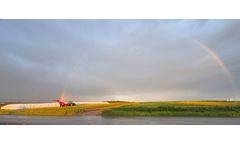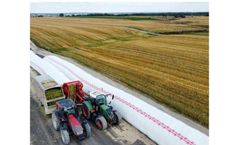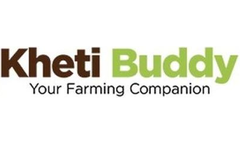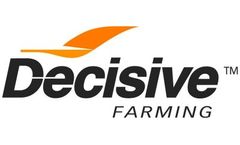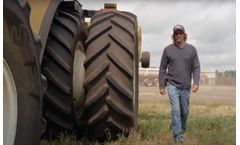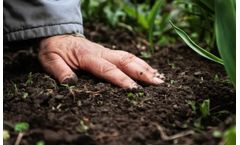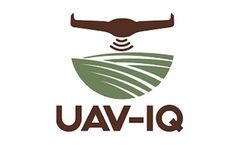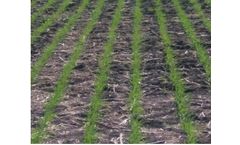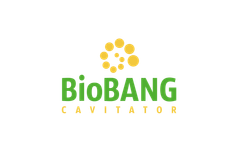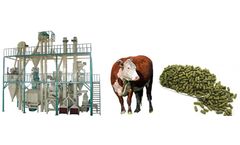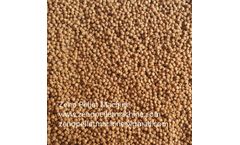Refine by
Barley Articles & Analysis
94 articles found
While many U.S. dairies rely heavily on corn silage, Canadian dairies often depend on legume- grass silage mixes, barley silage, or triticale that are better suited to cooler climates and earlier cuts. ...
Rather than relying on expensive dried grain, producers can bag head chops from barley, wheat, or ear-leaf snaplage as a near pound-for-pound replacement, reducing feed costs and maximizing on-farm resources. ...
For example, one field might be planted with nitrogen-fixing legumes such as peas or beans to replenish soil nutrients, while another might be sown with grains such as wheat or barley to break pest cycles and suppress weeds. This cyclical approach to farming helped maintain soil health and productivity, ensuring bountiful harvests year after ...
In the challenging and ever-evolving world of agriculture, where unpredictability reigns and efficiency is paramount, Dowd Hill Farms stands as a testament to the power of innovation and strategic partnerships. Nestled in the expansive landscapes of Dodsland, Saskatchewan, this family-run operation has embraced cutting-edge agricultural technologies to transform its farming practices. The case ...
With Pat Kunz at the helm, alongside his family, the farm has embraced soil health as the foundation for long-term success in their wheat, canola, barley, and pea rotation, as well as their cow-calf and feedlot ...
The farm comprises a cow-calf operation, feedlot and several hundred acres in a wheat, canola, barley and pea rotation. “Everybody talks about sustainability, and that’s the only word to use here,” Kunz says. ...
This year was a dry season in Drumheller, Alta., where his 2,500-acre farm produced about 40 per cent of its regular yield of wheat, canola, peas, lentils and barley. But for all the elements outside a farmer’s control, McDougald says such a yield was better than expected for such dry conditions. ...
Curtis Kornelson is a third generation farmer – he grows green lentils, canola, durum and barley on just over 8,000 acres northwest of Kindersley, Saskatchewan. ...
Previous studies on rice, wheat and barley have shown that changes in the expression of such genes alter plant growth and nitrogen content. ...
“The diseases they create are different. Everybody says barley and wheat are the same because they’re both cereals. Yes, but they have completely different diseases that affect ...
Beta-amylase is mainly found in higher plants (barley, wheat, sweet potato, soybean, etc.), but it has also been reported to exist in bacteria, milk, and molds. ...
The malting process is the first stage of beer production. It transforms the barley into malt through a germination process that needs to be well controlled. The quality of the barley is key to finally obtaining a premium end product, thus the malting quality (MQ) of barley needs to be assessed by a reliable technique. However, parameters ...
He relates that “some growers now transition to barley as a cover crop because it is not a lygus host, and therefore it decreases the overall lygus population in the spring and summer. So I would say the species of cover crop is important to decrease the pest pressure as well”. He explains that the barley stays on the field for about three to four ...
But seed – homegrown or otherwise – has inherent value. Take feed barley, for example: if you could have sold that barley for $8/bu to a mill, it’s still worth $8/bu going back into your field. ...
Alpha-amylase in the baking industry has always been extracted from barley malt, bacteria and fungi. In the modern continuous baking process, adding α-amylase to flour can increase the fermentation rate, reduce the viscosity of the dough, increase the sugar content in the dough, and improve the taste, crust color and baking quality of the bread. ...
A system of bag tank storage is putting a large-scale pig producer a step ahead of legislation that will require slurry stores to be covered by 2027. ...
Magnesium hydroxide (MgOH2) and calcium hydroxide (CaOH2) were fed alone or in combination as buffer /alkalizer supplements for sheep fed a high barley diet. They fed 1.0% Ca(OH)2, 0.79% Mg(OH)2, or 0.5% Ca(OH)2 plus 0.39% Mg(OH)2. ...
Plant’s power: 1400 kW/h Daily Feeding: Barley silage; sugar beet pulp; grain; corn silage; potatoes peelings; mustard skin Goal: Reduce the viscosity to increase the concentration of Dry Matter from 12% to 17% and thus increase the production of gas, keeping the same digester’s volumes Read more To see video, please click ...
Cattle Feed Pellet Introduction Cattle feed pellet is a type of compound feed mainly made from barley, forage, bean, bran, wheat, corn, and additives, such as vitamins, minerals, and other essential micro-ingredients. ...
Bran 43% ,fish meal 30% , soybean cake 15% , barley 10% , additives 2% , feed coefficient 2%. 2. Bean cake 50%, fish meal 15%, bran 15%, rice bran 15%, vitamin 1%, inorganic salt 1%, antibiotic scraps 1%, binder 2%, feed coefficient 2.70. ...

